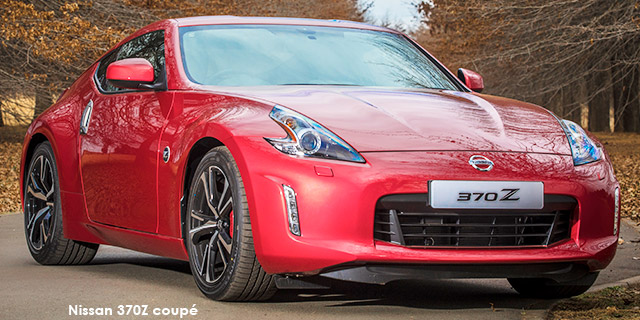The 370Z represents a bygone automotive era. That doesn’t mean its without its charms, though...
Large-capacity, naturally aspirated engines; manual transmissions; hydraulic power steering. They all have one thing in common: a spot on the endangered-species list. The motorcar is changing and, as engines are downsized and turbocharged, then coupled with automatic transmissions before being paired with hybrid systems on their journey to becoming fully electric, we thought it the perfect time to reassess an automotive anachronism, the Nissan 370Z.
The Z-car is a Japanese icon and its roots can be traced back to the 1969 240Z. That perfectly proportioned coupé with its long bonnet and muscular haunches struck a chord with the public and some christened it the Japanese E-Type. Six generations later, in 2009, the 370Z was launched locally and has stayed true to the original concept while adding more performance and street presence. We tested an automatic version in the July 2009 issue of CAR and heaped praise on it. Here’s just one such example of the purple prose: “In every sinew a muscle car, offering all the right ingredients for a ride on the wild side.”
Nearly nine years later, Nissan has seen fit to tweak the 370Z, adding metal-effect door handles, a black-painted rear diffuser, tinted lamp lenses and a new
set of 19-inch Rays Engineering alloy wheels.
Inside, not much has changed. You’ll still find a facia festooned with buttons, a clunky infotainment system and no reach adjustment on the steering column (although most could find a good driving position). Instead, focus on the trio of Z-car gauges on the dash (showing time, battery voltage and engine oil temperature) and the large central rev counter with a 7 500 r/min redline, and it’s obvious pottering about is not the 370Z’s raison dêtre.
Depress the slightly stiff left pedal (connected to the new Exedy semi-racing clutch plate), select first gear via the meaty shift action of the six-speed manual gearbox, increase the revs and drop the clutch. Depending on whether the driver has switched off the traction control (via a quick-touch button), the Z will either scamper off the line with the electronic nannies on full alert, or paint black Bridgestone 11s on the road. A shift to second pauses the action for a moment as the Z’s nose dives, whereafter the hooliganism continues and the smile on the driver’s faces broadens…
On our test strip, the Nissan needed a more measured approach than that to post a 0-100 km/h time of 5,91 seconds, just about good enough to see off those pesky FWD hot hatches. Under the bonnet beats the same 3,7-litre V6 mounted far back in the bay. It features variable valve timing and lift, but was never – and still isn’t – the smoothest or most free-revving V6. Saying that, the induction noise is addictive and motivates the driver to keep their foot planted on the accelerator for longer.
Driving the Nissan as intended sends the fuel consumption rocketing skywards from the already hefty 13,3 L/100 km we achieved on our standard (sedate) fuel run and the 72-litre tank needs filling on a regular basis. Braking performance, however, is deeply impressive even by supercar standards and the Z recorded an average of 2,71 during our punishing 10-stop braking routine from 100 km/h.
Dynamically, it still feels competitive. The ride is cosseting over broken surfaces and affords the Z a rounded character for daily use. A mass of 1 536 kg (measured on our scales fully fuelled) means that it is more suited to flowing bends than sharp corners anyway. Turn-in sharply off the power and the Z understeers. However, turn in on the power and easily accessed oversteer is on the menu (with the limited-slip differential playing along). At the slip point, though, it takes skill to balance the chassis (featuring front and rear strut braces) and get the most from the grip offered by the four Potenzas. For optimal track work, the car would ideally need stiffer springs and dampers, plus a reduction in mass.
TEST SUMMARY
Most CAR staffers were surprised by how charming the 370Z still is, but also how competitive it has remained in certain crucial aspects. That said, occupying such a small niche in the market, it may continue to struggle persuading buyers to choose it over more modern competition. Thankfully, at R661 900, the 370Z offers good value considering the generous standard specification on offer (including satellite navigation, for example).
We say take the plunge, opt for the slick manual transmission and its brilliant rev-matching feature, and you may find your life becoming a lot more exciting. Just avoid M240i drivers at the lights...
*From the February 2018 issue of CAR magazine
ROAD TEST SCORE

|
Original article from Car










